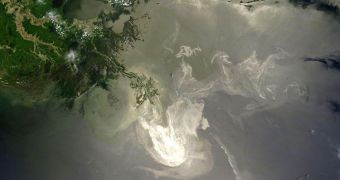Marine biologists and ocean scientists are currently trying to figure out a mystery that has been surrounding the Gulf of Mexico these past few weeks. Chemical analysis reveal little traces of methane, the most common hydrocarbon that was produced in these water following the 2010 oil spill.
According to the results of a new study, it would appear that the vast concentration of the dangerous greenhouse gas methane that existed in waters south of Louisiana and Mississippi have all but disappeared, with no apparent culprit.
Experts in these matters are currently trying to figure out what happened. The leading explanation at this point is that marine bacteria consumed volumes of the chemical, even if this naturally-occurring process was expected to last for as much as several years.
The 2010 BP/Deepwater Horizon oil spill was triggered on April 20, when the semi-submersible drilling rig exploded. Two days later, on April 22, it sunk in the waters of the Gulf, triggering the onset of the worst environmental disaster in US history.
Following the tragedy, which killed 11 workers on the Deepwater Horizon, more than 4.9 million barrels, or 206 million US gallons of crude spilled in the Gulf, affecting an area of up to 180,000 square kilometers, or 68,000 square miles.
When the spill began, the most common compounds to be emitted were methane, ethane and propane, all forms of natural gas, and they accounted for about 66 percent of all released hydrocarbons.
Microbes in the waters immediately began devouring the large gas molecules, but those only accounted for 12.5 percent of the entire amount of gas. The remainder was made up of very tiny methane gas molecules, experts say.
“We were caught off guard. But that highlights the beauty of the scientific process. You put together hypotheses based on the information at hand and test them,” says scientist John Kessler.
“And whether we’re right or wrong, at the end of the day we’ll have learned something new about the system,” the Texas A&M University oceanographer explains.
He is the author of an October 8, 2010 paper published in Science, which showed that it would take years for all the methane in the Gulf to disappear.
In the new work, published online in the January 6 issue of the same journal, he announces that methane concentrations are now below average in the same area, and even below background levels common for the Gulf of Mexico.
Scientists are now tasked with finding out what happened, since it's obvious that microbes alone could not have consumed that much methane in less than 9 months, Science News reports.

 14 DAY TRIAL //
14 DAY TRIAL //